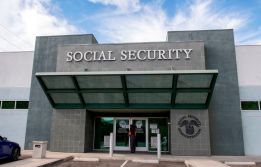FDA has plans to overcome challenges in building medical device surveillance system, GAO says

The Food and Drug Administration has faced a handful of challenges as it builds a surveillance system to monitor the safety and efficacy of medical devices after they enter the market, but the agency has plans in place to address those issues as it eyes expansion of the program, according to a new watchdog report.
The FDA’s active postmarket surveillance system relies on data pulled from electronic health records, wearable devices, mobile health applications and more to evaluate the safety of a medical device. As the agency establishes the system to better evaluate authorized tools in the U.S market, it has run into funding challenges for active surveillance and found “limited use of unique device identifiers in electronic health records and billing claims,” according to the Government Accountability Office. The latter point has made identifying devices used by patients “more difficult,” per the GAO.
Though patients and health professionals can report issues with medical devices through the agency’s Medical Device Reporting, a 2012 federal law required the FDA to establish the postmarket surveillance system, a move that could help address the fact that faulty medical devices are linked to more than 1.7 million injuries and 83,000 deaths over a “recent 10-year period,” according to the GAO. The oversight of medical device products has held a place on the watchdog’s high-risk list since 2009.
“We have previously reported on challenges FDA has faced in its oversight of the safety of medical products, including medical devices,” the report states. “In 2012, we found that FDA’s process for identifying adverse events associated with medical devices … may not fully capture cybersecurity vulnerabilities for certain devices.”
Despite the challenges facing the FDA in its creation of the system, the GAO found that the agency has taken steps to address both issues by encouraging device providers to include unique identifiers, which should result in faster and more accurate identification of devices as well as patients. That change would result in “significantly less effort from staff,” the report said.
On the funding issue, the FDA cited the costs necessary to establish and maintain this system at $8 million per year, and it plans to allocate $5 million from annual appropriations to the system. Additionally, the agency has requested another $3 million in the fiscal year 2024 appropriations but did not receive the requested funds. In response to the lack of funds from Congress, the agency has used device user fees to fund the surveillance activities.
The GAO report states in a footnote that the “FDA did not make a similar request in the agencies’ FY2025 budget justifications.”
Meanwhile, the FDA told the GAO that by December, it plans to begin active postmarket surveillance on two medical devices, with hopes to continue expanding the number of devices evaluated over the next five years.
To build the surveillance system, the GAO noted that the FDA has established the necessary cloud-based data infrastructure “necessary to collect evidence of medical device performance while protecting patient privacy,” and established a partnering coordinating center to organize a network of information sources.






